TABLE OF CONTENTS
Brief Introduction
Stainless steel cookware has been a staple in kitchens for decades, and for good reason. When it comes to choosing the best material for cookware, stainless steel consistently stands out as a top choice for both professional chefs and home cooks. With its durability, versatility, and performance, it’s no surprise that stainless steel is often the material of choice for both home cooks and professional chefs alike. In this article, we’ll dive deep into why stainless steel is the best material for cookware, exploring its benefits, potential downsides, and how it compares to other materials. By the end, you’ll understand why stainless steel is a must-have in your kitchen and discover some of the best stainless steel cookware options available.
What Is Stainless Steel?
Stainless steel is an alloy made primarily of iron, carbon, and chromium. The addition of chromium (at least 10.5%) gives stainless steel its signature resistance to rust, corrosion and staining. The chromium content forms a thin, protective layer on the surface of the steel, which helps prevent oxidation and keeps it looking shiny and new. Other elements, such as nickel and molybdenum, are often added to enhance its strength, durability, and aesthetic appeal.
Stainless steel is available in various grades, with 18/10 and 18/8 being the most common for cookware. These numbers refer to the percentages of chromium (18%) and nickel (10% or 8%) in the alloy. The higher the nickel content, the more resistant the steel is to corrosion and staining, making it ideal for kitchen use.
This unique composition makes stainless steel an ideal material for cookware. It’s non-reactive, meaning it won’t interact with acidic or alkaline foods, and it’s incredibly durable, capable of withstanding high temperatures and daily wear and tear.
Why is Stainless Steel Good for Making Pots?
Stainless steel’s popularity in cookware isn’t just a trend—it’s backed by science and practicality. Here’s why stainless steel is an excellent choice for pots and pans:
Durability
Stainless steel is incredibly strong and resistant to dents, scratches, and corrosion. Unlike some materials that can scratch, chip, or dent easily, stainless steel can withstand rough handling and last for many years for your kitchen.
Heat Retention and Distribution
Stainless steel is a poor conductor of heat on its own, but many high-quality stainless steel pots and pans feature an aluminum or copper core. This layered construction ensures even heat distribution, preventing hot spots and allowing for precise cooking. The exterior of stainless steel pots is also typically magnetic, allowing them to be used on induction stove tops.
Non-Reactive Surface
Stainless steel won’t react with acidic or alkaline foods, preserving the flavor and integrity of your dishes. This makes it perfect for cooking tomato-based sauces, citrus-infused recipes, and more.
Easy Maintenance
Stainless steel is easy to clean and maintain. Unlike cast iron or copper cookware, it doesn’t require seasoning or polishing. It can also be placed in the dishwasher for easy cleaning, although handwashing is often recommended to preserve its shine. It doesn’t require special cleaning agents or techniques, making it a convenient option for busy households.
Aesthetic Appeal
With its sleek, polished finish, stainless steel cookware adds a touch of elegance to any kitchen. Its shiny, reflective surface gives it a sophisticated, professional look that appeals to both home cooks and culinary experts. It’s a timeless material that never goes out of style.
Is Stainless Steel the Healthiest Cookware?
Stainless steel is often considered one of the healthiest options for cookware. This is because it is non-toxic and does not leach chemicals into your food, unlike some other materials, such as non-stick pans that may release harmful substances at high temperatures.
Because it is non-reactive, stainless steel won’t alter the nutritional value of food, and it’s safe for cooking acidic dishes like tomato sauces or citrus-based recipes. Moreover, there’s no need to worry about toxic coatings, such as PTFE (polytetrafluoroethylene) found in some non-stick cookware.
While stainless steel has many advantages, it’s not without its drawbacks:
- Heat Conductivity: Pure stainless steel is a poor heat conductor. This can lead to uneven cooking if the cookware doesn’t have an additional layer of copper or aluminum to improve heat distribution. But imarku's stainless steel cookwares are manufactued with additional copper so that you do not need to worry about the heat conductivity.
- Food Sticking: Stainless steel cookware can be prone to sticking, especially when cooking delicate foods like eggs or fish. To avoid this, make sure the pan is properly preheated and use adequate oil or butter.
- Weight: High-quality stainless steel cookware can be heavy, which may be a concern for some users.
- Price: High-quality stainless steel cookware can be more expensive than alternatives like non-stick or aluminum cookware. However, the investment pays off in the long run due to its durability and longevity.
How to Avoid These Disadvantages:
- Preheat Your Pan: To prevent food from sticking, always preheat your stainless steel pan before adding oil or food.
- Use Proper Techniques: Learn how to cook with stainless steel, such as waiting for the oil to shimmer before adding ingredients.
- Invest in Quality: While the upfront cost may be higher, high-quality stainless steel cookware lasts longer and performs better, making it a worthwhile investment.
Differences Between Stainless Steel Cookware and Non-Stick Pans
Stainless steel and non-stick pans each have their strengths and weaknesses. Here’s a quick comparison:
|
Feature |
Stainless Steel Cookware |
Non-Stick Pans |
|
Durability |
Extremely durable, long-lasting |
Prone to scratches and wear |
|
Heat Resistance |
Can withstand high temperatures |
Limited by non-stick coating |
|
Maintenance |
Easy to clean, dishwasher-safe |
Requires gentle cleaning |
|
Health Safety |
Non-reactive, no harmful chemicals |
Potential chemical release at high temps |
|
Versatility |
Suitable for all cooking methods |
Best for low to medium heat |
While non-stick pans are great for delicate foods like eggs and pancakes, stainless steel cookware offers unmatched versatility and durability for a wide range of cooking techniques.
Why Do Professional Chefs Choose Stainless Steel Cookware?
Professional chefs love stainless steel cookware for several reasons:
- Versatility in the Kitchen: Stainless steel can handle a variety of cooking techniques, including frying, sauteing, and simmering. It can also be used for both stove top and oven cooking, making it an all-around tool for the kitchen.
- Precision Cooking: Chefs rely on stainless steel’s responsiveness to temperature changes. Unlike non-stick pans, which can be harder to control, stainless steel allows chefs to make precise adjustments to cooking temperature. The even heat distribution ensures precise cooking every time.
- Durability and Reliability: With daily use in busy kitchens, chefs need cookware that can stand up to constant wear and tear. Stainless steel is strong, reliable, and can last for decades with proper care. It also can withstand the rigors of a busy commercial kitchen.
- Professional Aesthetic: The sleek, shiny surface of stainless steel gives kitchens a clean, professional look, which appeals to chefs who want their tools to reflect their level of expertise.
For chefs, stainless steel isn’t just a tool—it’s an essential part of their cookware. But it’s also important to gain a best stainless steel knife set in the kitchen. You can read this best kitchen knife set buying guide to discover our top stainless steel knife sets.
Stainless Steel Cookware We Love
At imarku, we offer a range of high-quality cookware that combines durability, performance, and versatility. If you're looking for reliable stainless steel cookware that will last for years and elevate your cooking experience, check out these two best-selling options:
Tri-ply Clad Stainless Steel Cookware Set
The Tri-ply Clad Stainless Steel Cookware Set from Imarku is a game-changer for anyone who loves to cook. Designed with a 3-layer fully clad construction, this set ensures even heat distribution, eliminating hot spots and delivering consistent results every time. Whether you’re searing a steak, simmering a sauce, or frying up breakfast, these pots and pans are built to perform.
The ergonomic, stay-cool handles make cooking comfortable and safe, even during long sessions, while the oven-safe design (up to 500°F) allows for seamless transitions from stove top to oven. Compatible with gas, electric, and induction cook tops, this set is as versatile as it is durable. Plus, its sleek stainless steel finish adds a touch of sophistication to any kitchen.
Fully Clad Steel Nonstick Stainless Steel Pots and Pans Set
The Fully Clad Steel Nonstick Stainless Steel Pots and Pans Set is is the ideal choice for anyone looking for a comprehensive cookware set that includes both non-stick and stainless steel options. This versatile set provides all the essential pieces needed for a variety of cooking techniques, from frying and sauteing to simmering and boiling.
The non-stick coating ensures easy food release, while the stainless steel stock pots provide the strength and durability needed for long-lasting performance. Whether you're preparing a quick weeknight dinner or a special weekend feast, this cookware set will help you achieve optimal cooking results with minimal effort.
With the tri-ply construction, this set offers fast, even heating, making it a great choice for busy kitchens. The cool-touch handles make it safe to use, and the dishwasher-safe design adds an extra level of convenience. From stove top to oven, this cookware set offers unbeatable versatility.
Conclusion
Stainless steel cookware is a timeless investment that offers durability, versatility, and health benefits. Whether you’re a professional chef or a home cook, stainless steel is a reliable choice that can handle all your culinary needs.
By understanding its advantages and learning how to use it effectively, you can make the most of this exceptional material. And with high-quality options like Imarku’s stainless steel cookware, you can elevate your cooking experience to new heights.
So, why wait? Upgrade your kitchen with stainless steel cookware today and enjoy the perfect blend of performance, style, and longevity.
FAQS
Q1. What makes stainless steel cookware better than other materials?
Stainless steel cookware is highly durable, resistant to rust and corrosion, and non-reactive with acidic or alkaline foods. Its layered construction (often with aluminum or copper cores) ensures even heat distribution, making it versatile for various cooking techniques. Additionally, it’s easy to clean and maintains a sleek, professional appearance.
Q2. Is stainless steel cookware safe for health?
Yes, stainless steel is one of the healthiest cookware options. It’s non-toxic, doesn’t leach chemicals into food, and is non-reactive, making it safe for cooking acidic dishes like tomato sauces or citrus-based recipes. Unlike non-stick pans, it doesn’t require coatings that can wear off or release harmful substances.
Q3. How do I prevent food from sticking to stainless steel cookware?
To prevent sticking, always preheat your stainless steel pan before adding oil or food. Wait until the oil shimmers or forms a thin layer, then add your ingredients. Using proper cooking techniques and ensuring the pan is at the right temperature will help achieve a non-stick effect.
Q4. Can stainless steel cookware be used on induction cookt ops?
Yes, most high-quality stainless steel cookware, like Imarku’s Tri-ply Clad sets, is compatible with induction cook tops. The magnetic properties of stainless steel allow it to work efficiently on induction stove tops, making it a versatile choice for all kitchen setups.
Q5. What’s the difference between stainless steel and non-stick cookware?
Stainless steel cookware is durable, versatile, and suitable for high-heat cooking, while non-stick pans are ideal for low to medium heat and delicate foods like eggs. Stainless steel requires proper preheating to prevent sticking, whereas non-stick pans offer effortless food release but may wear out over time and are less durable.
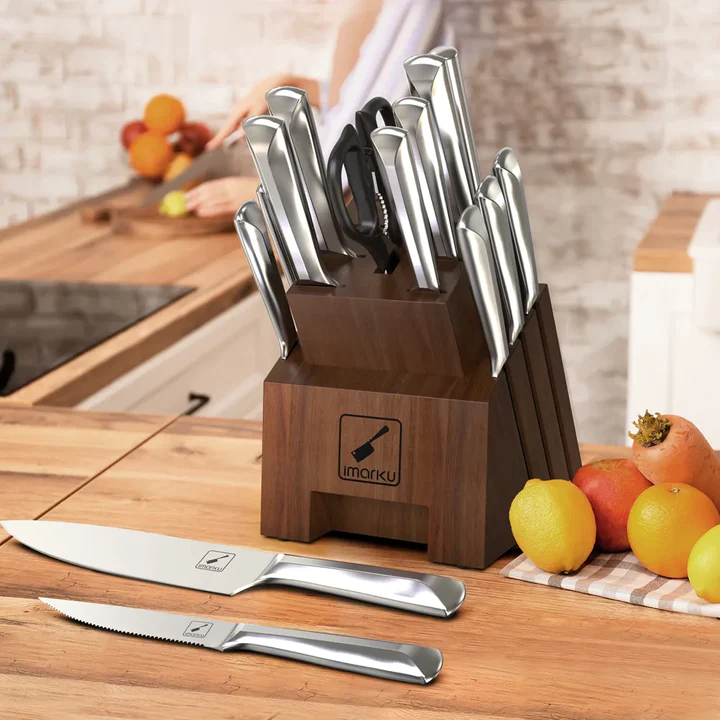
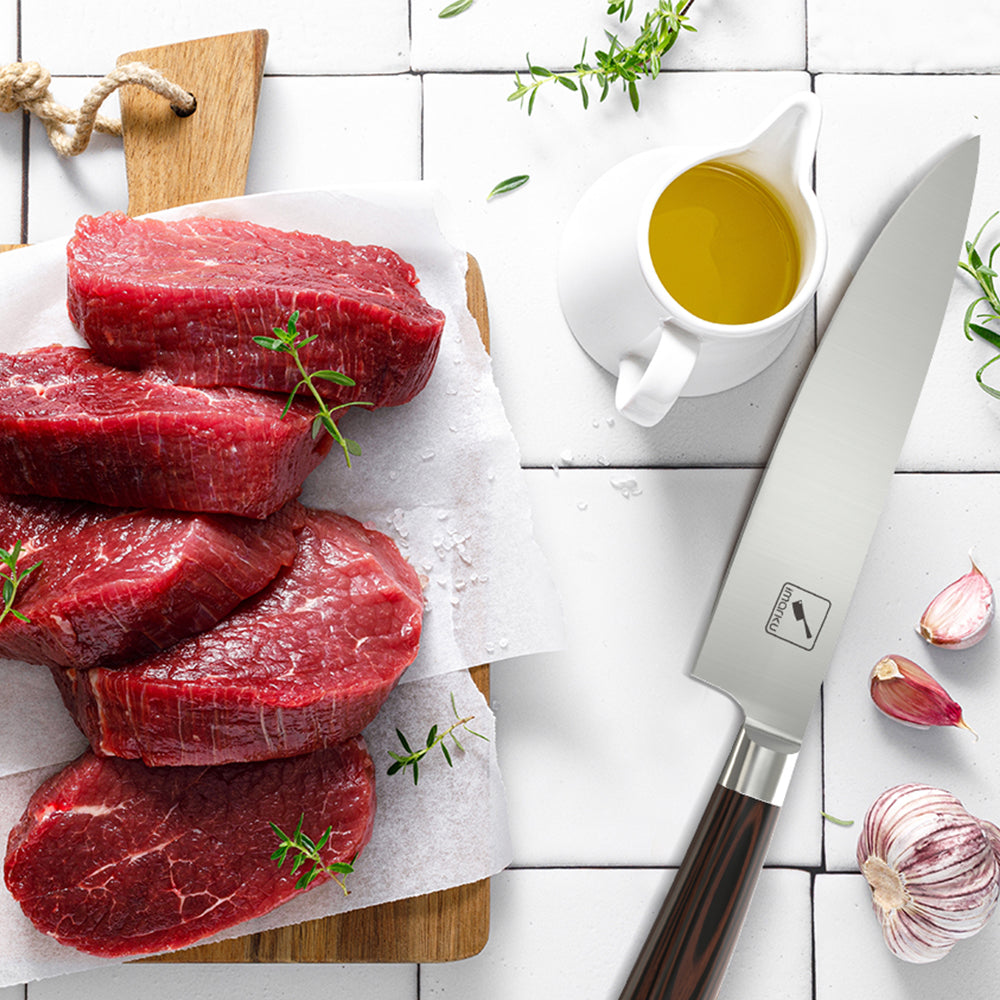





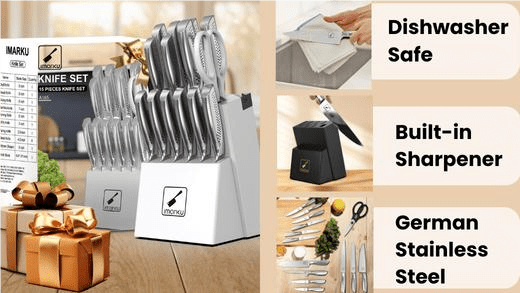
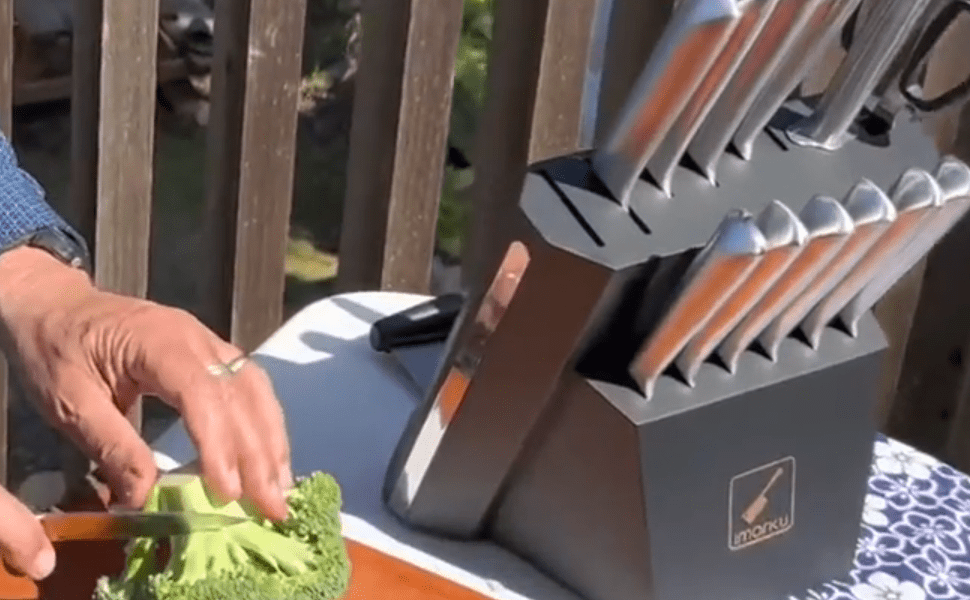

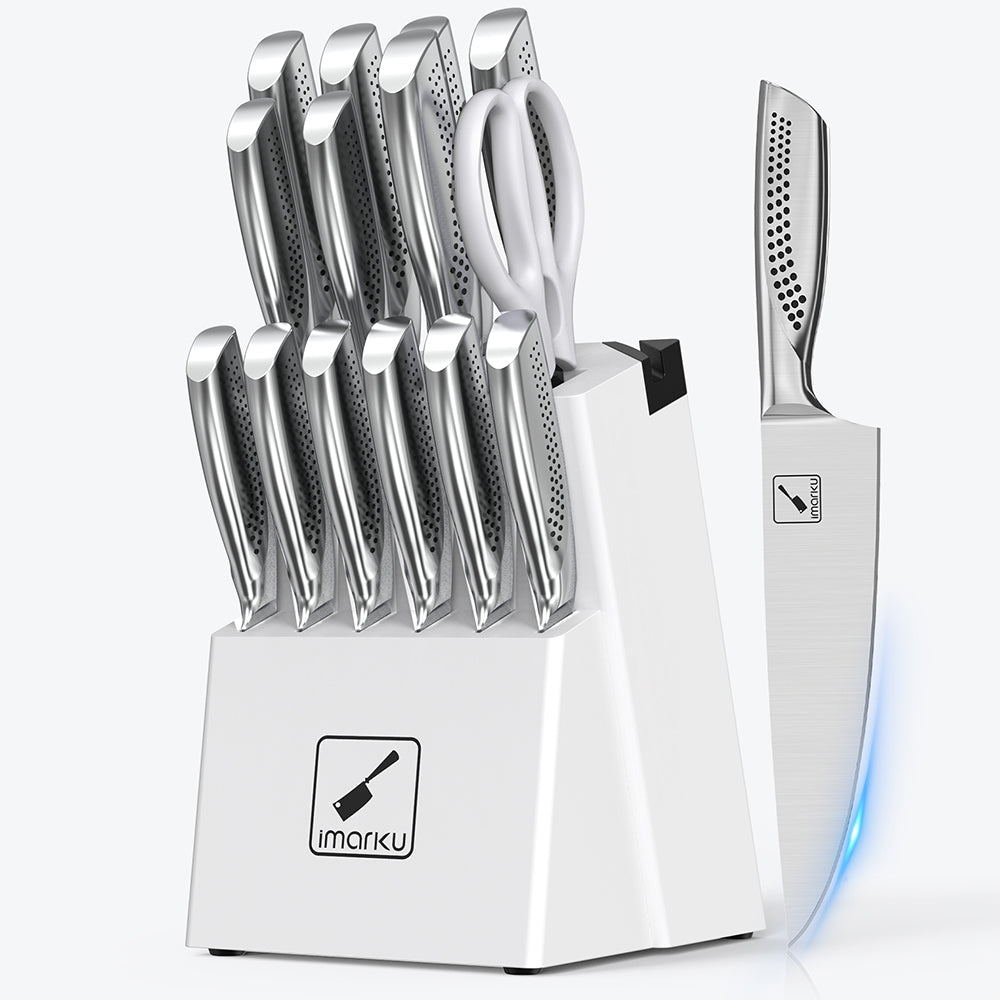
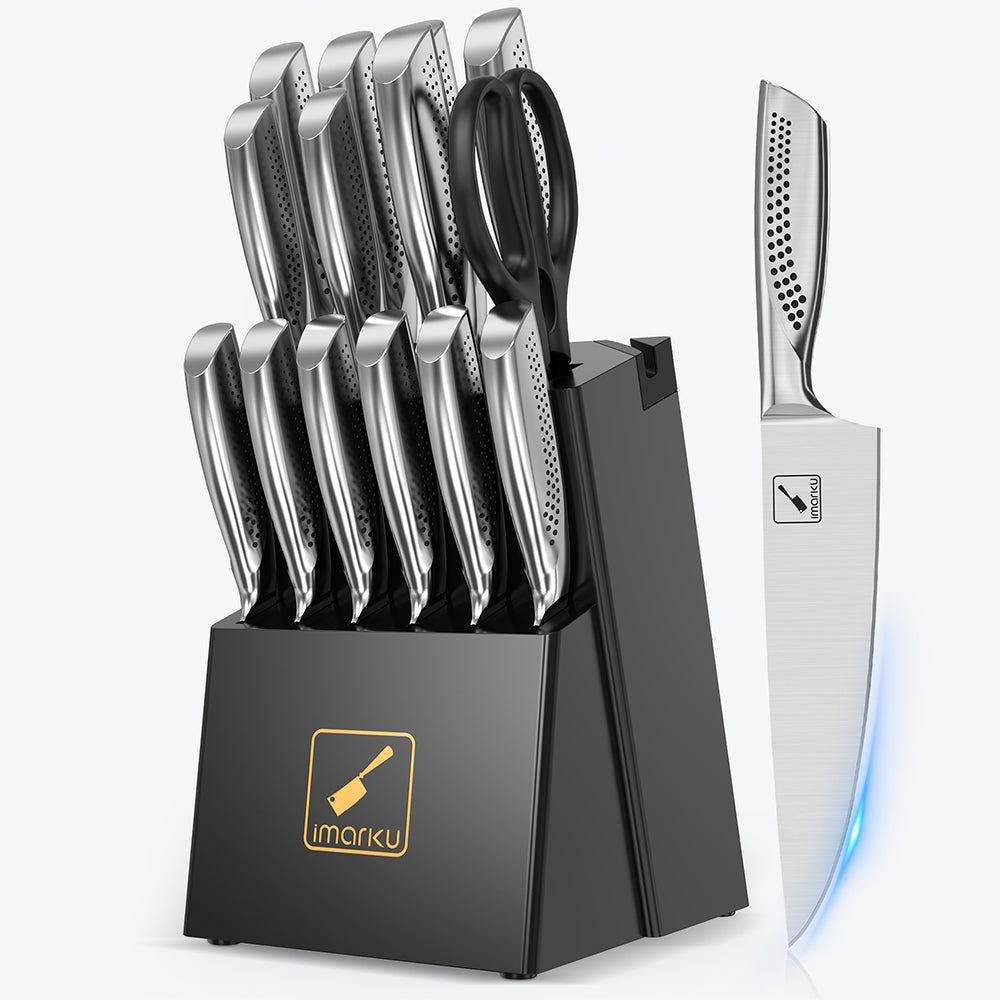
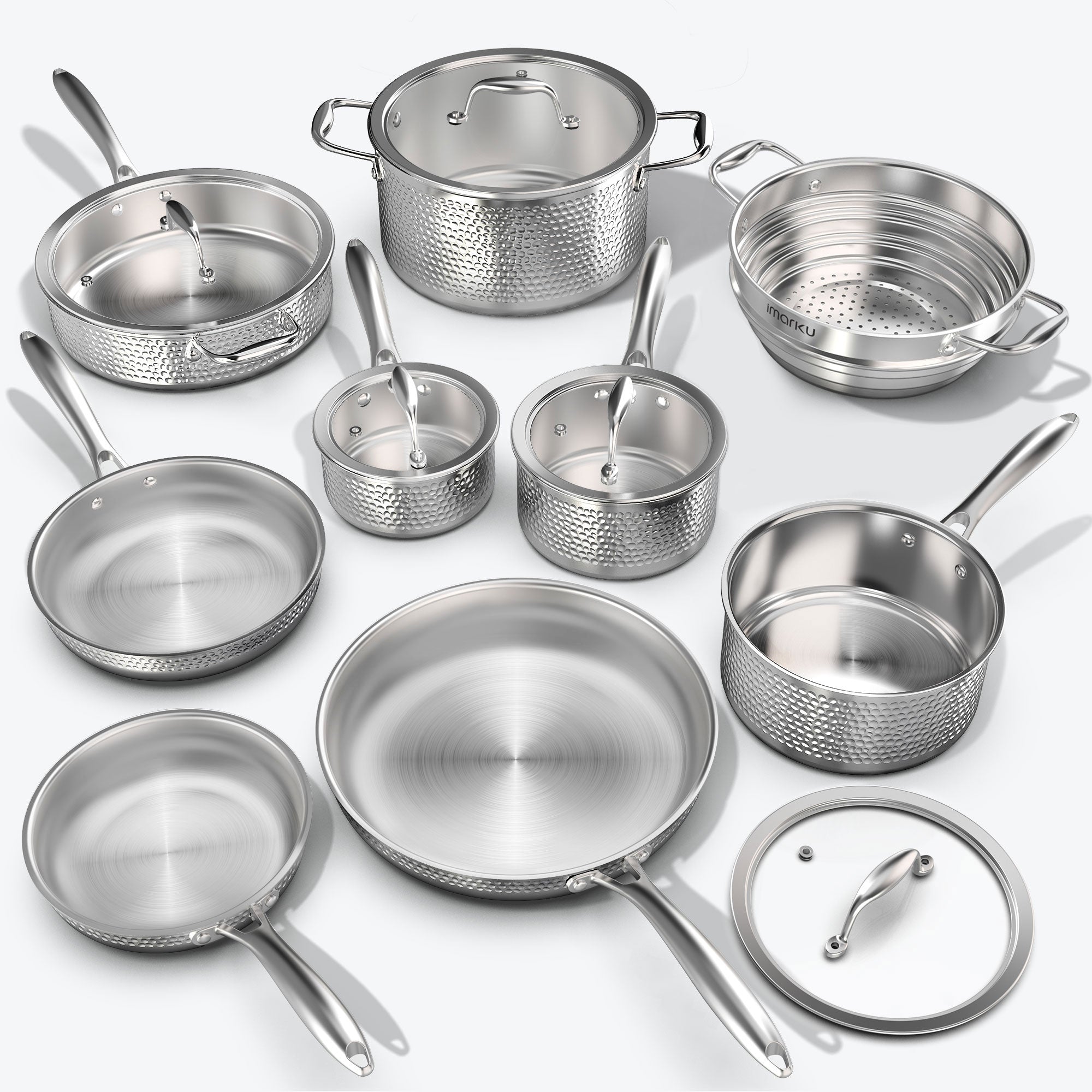
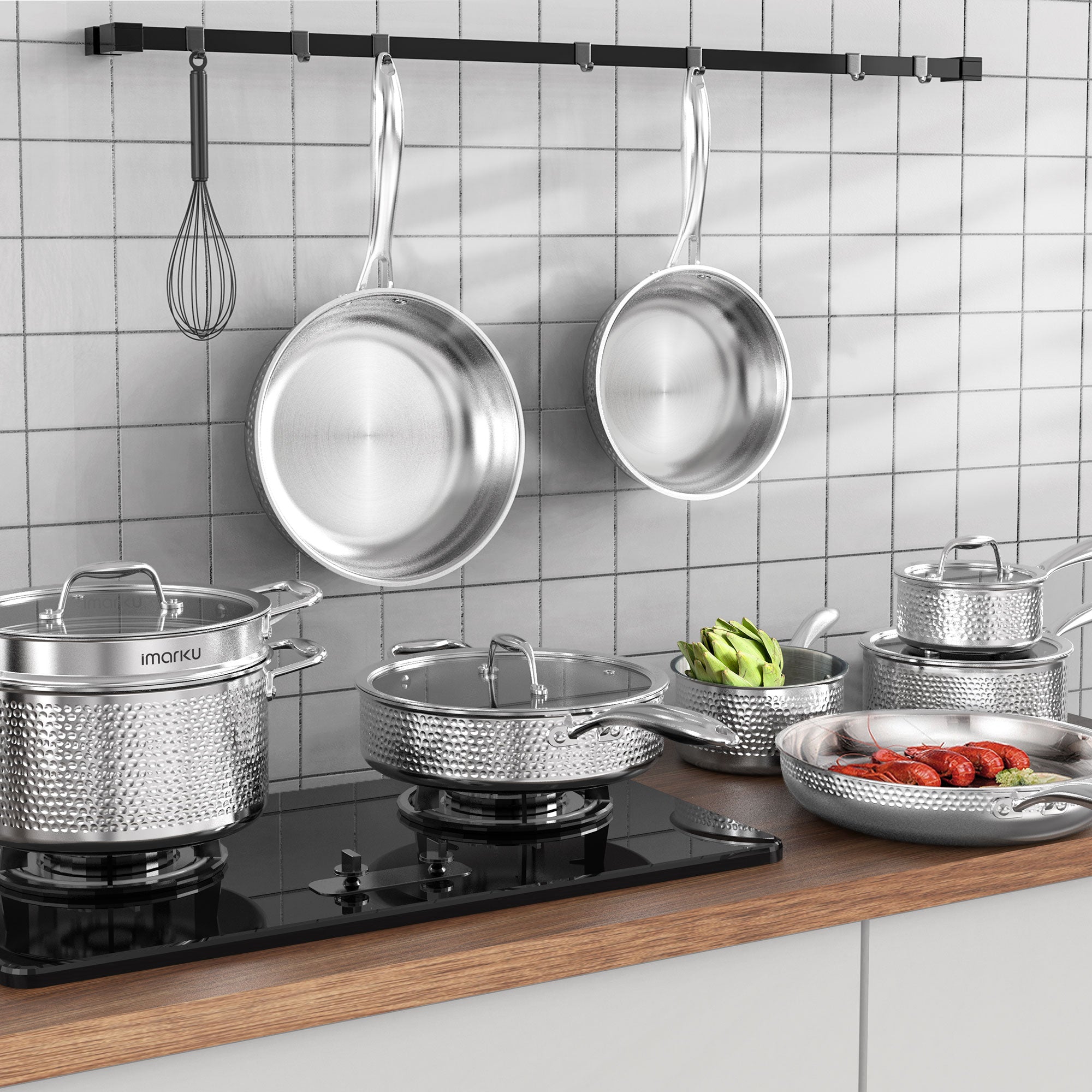
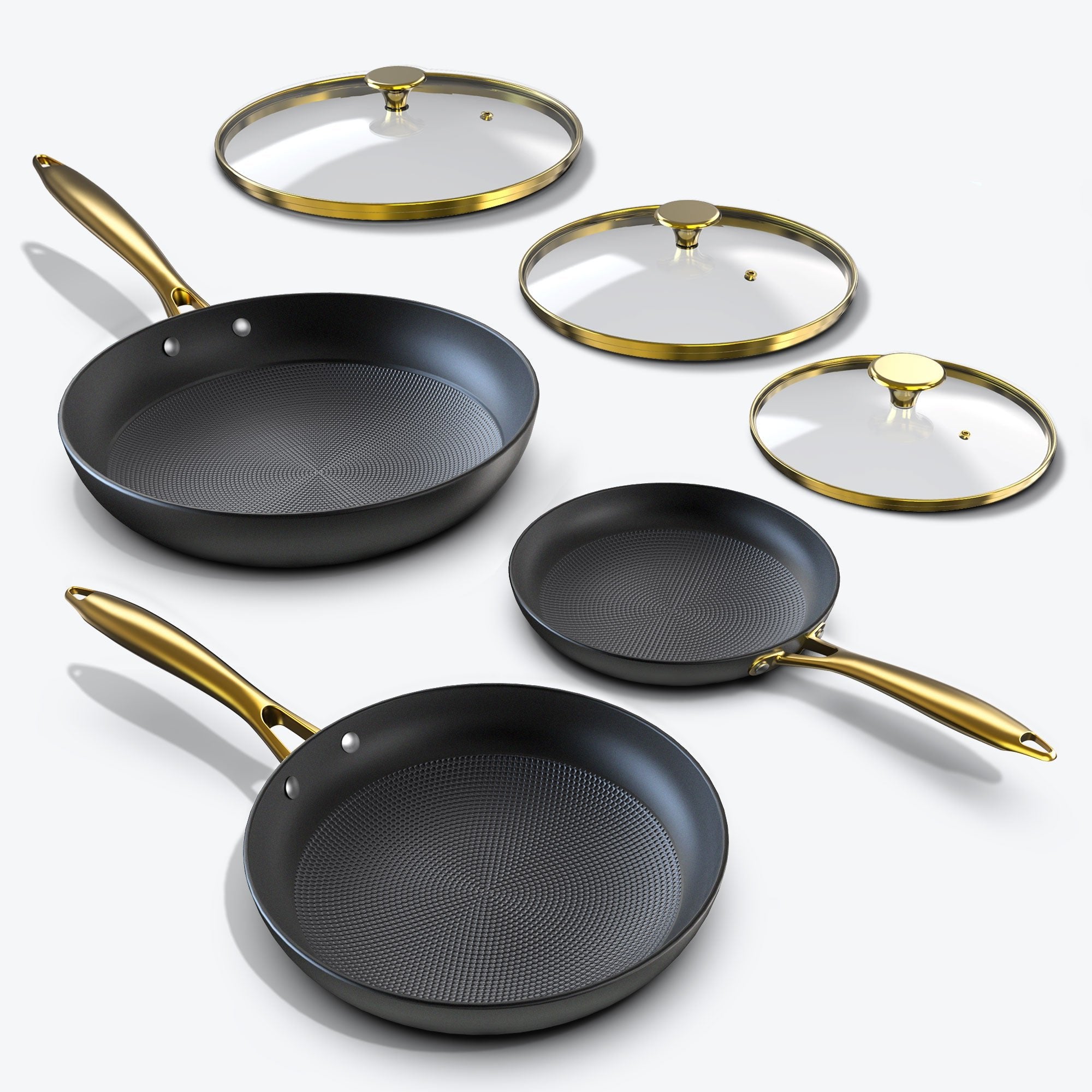
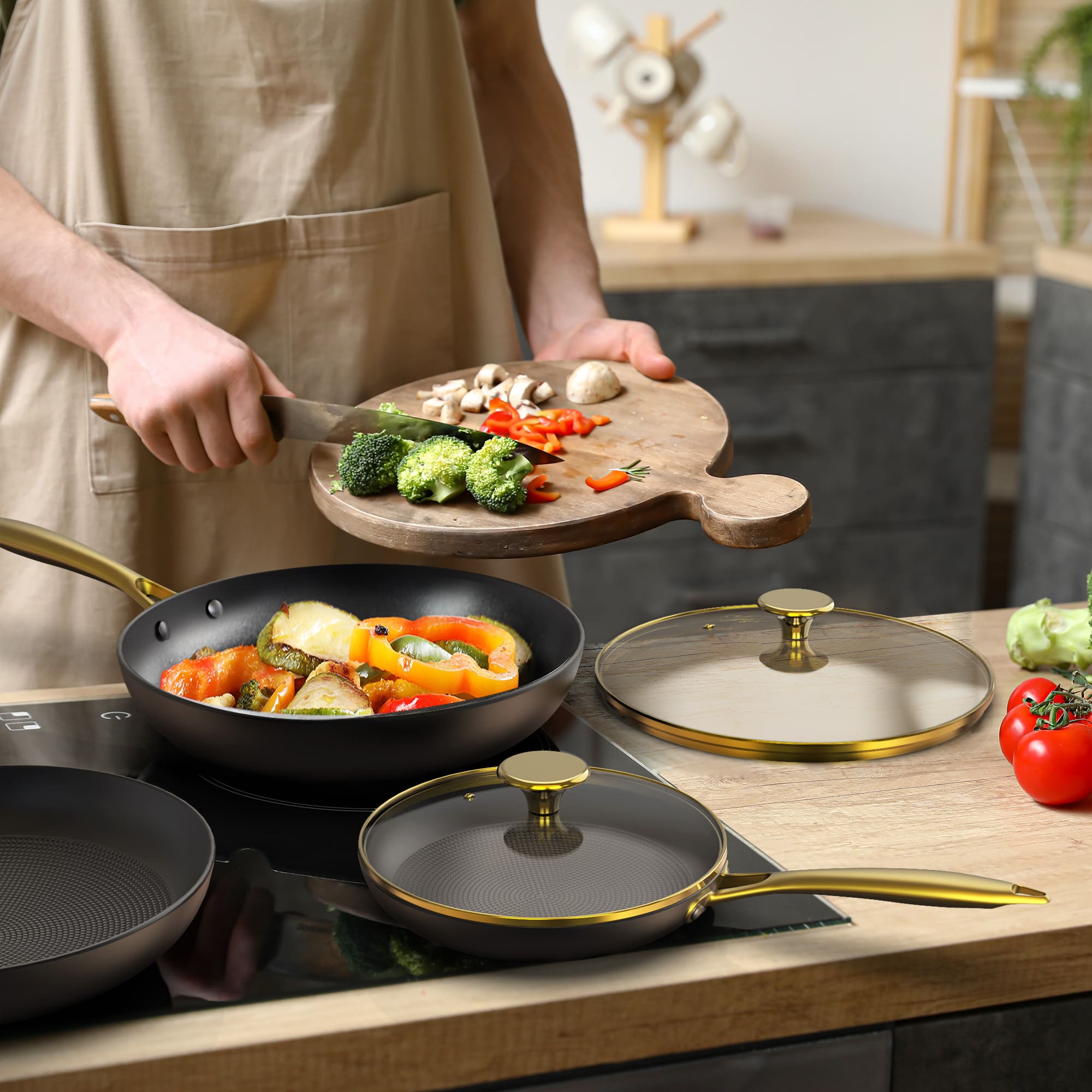
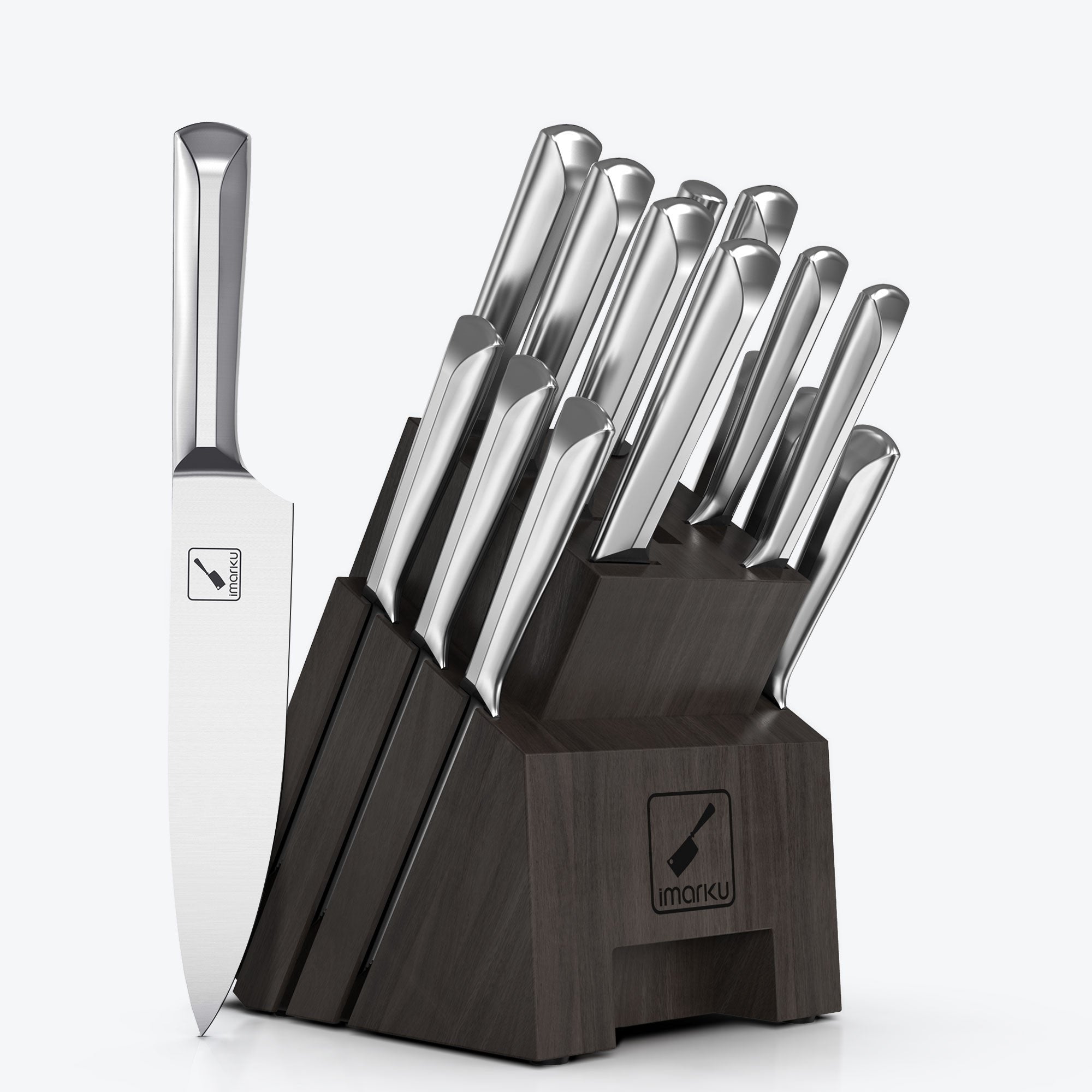
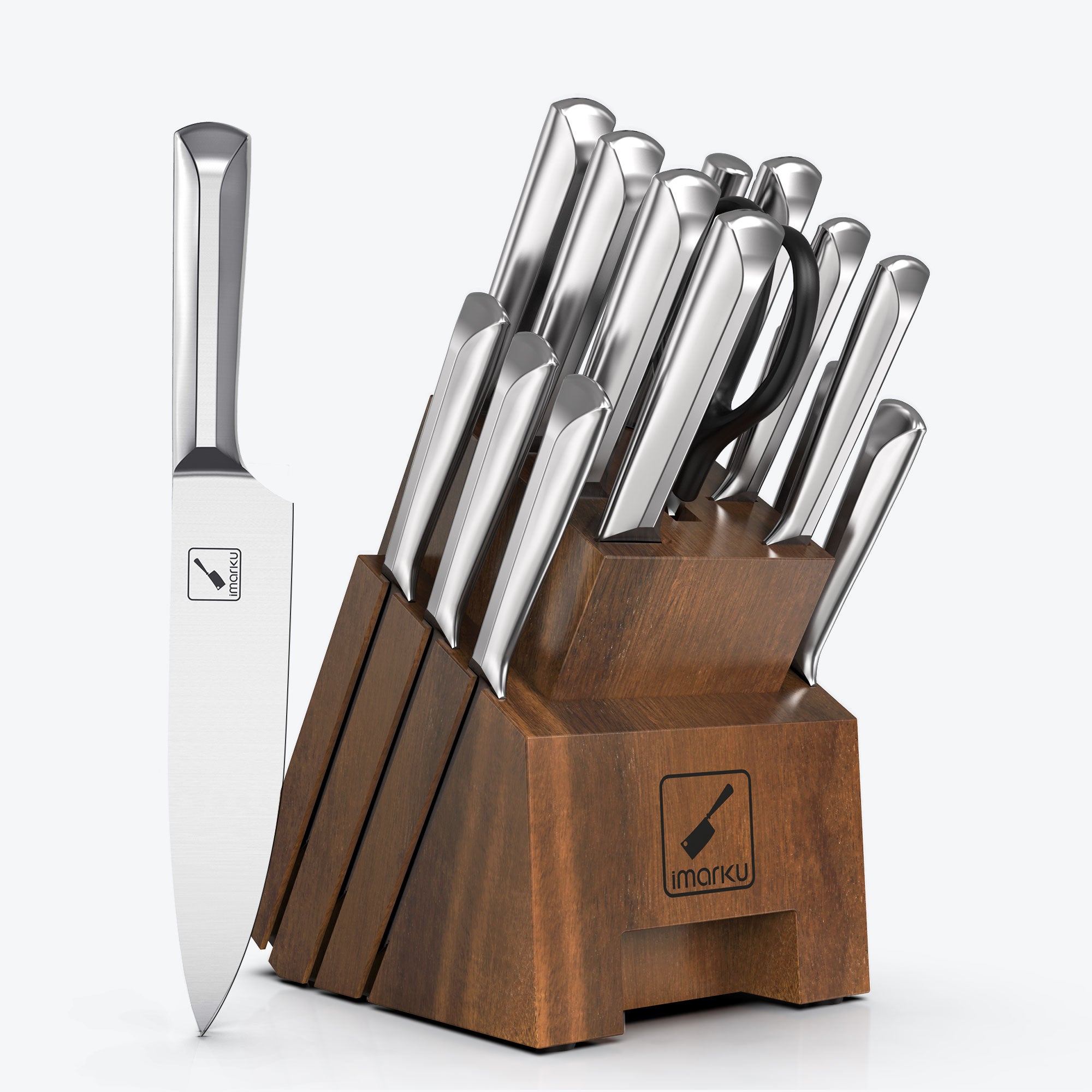
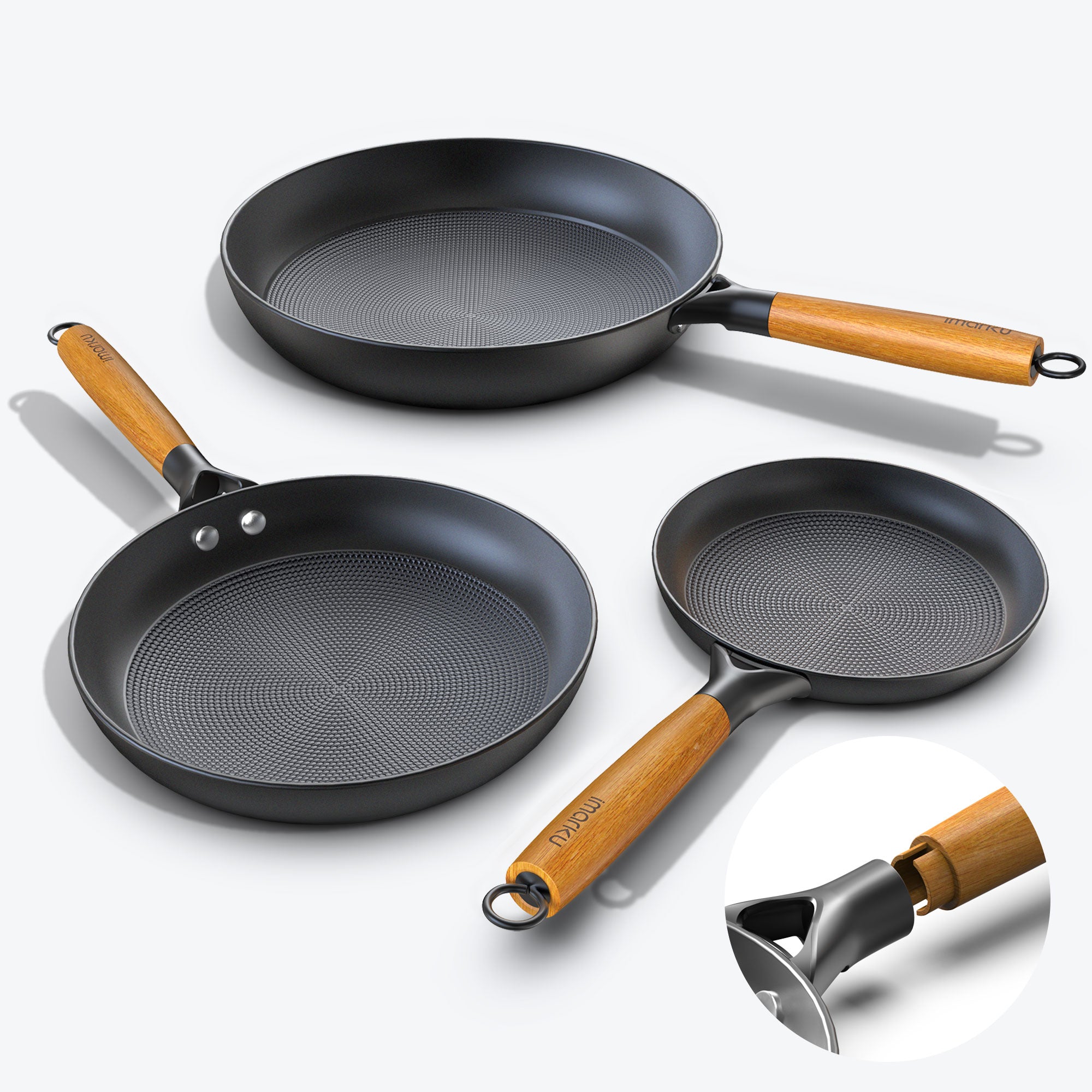
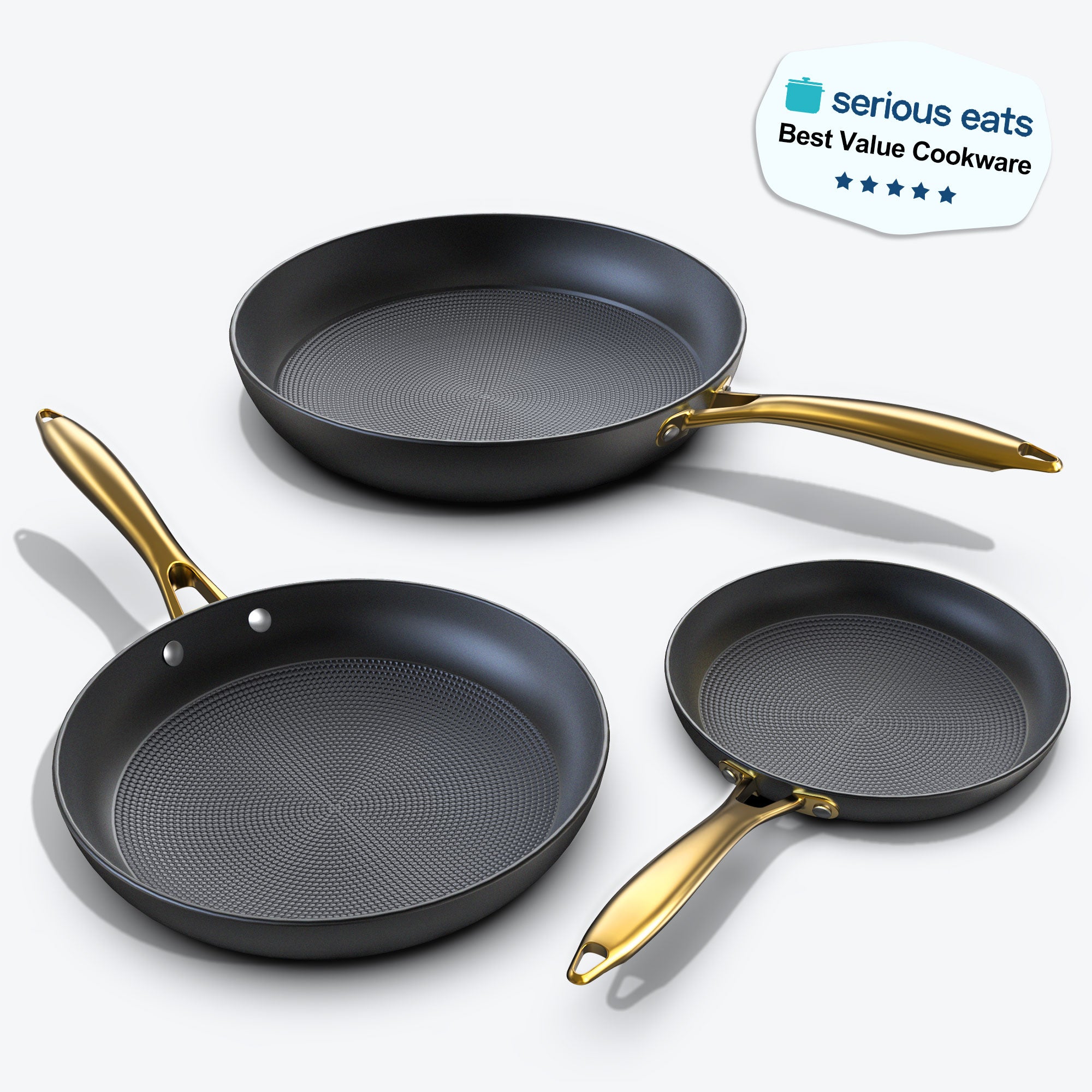
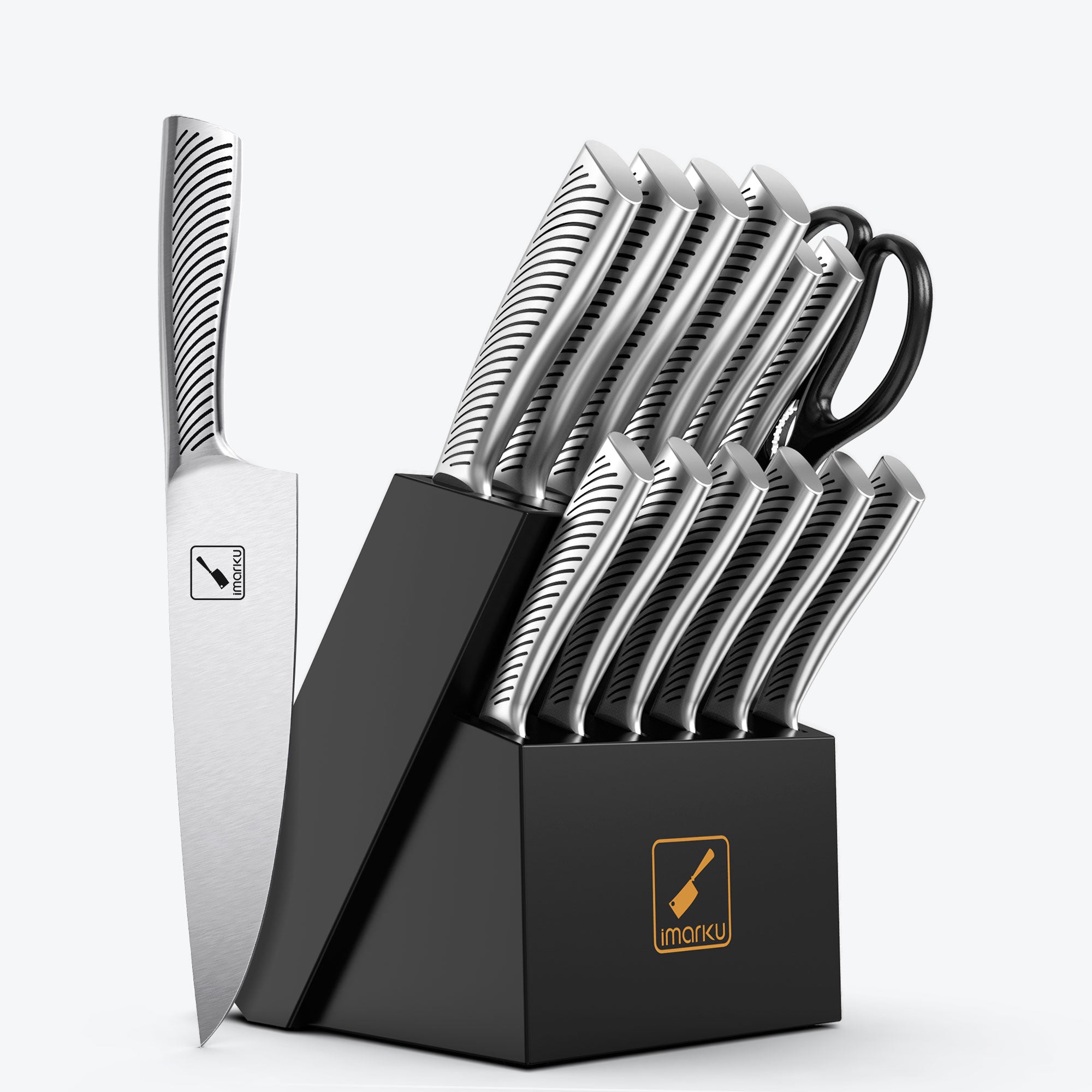
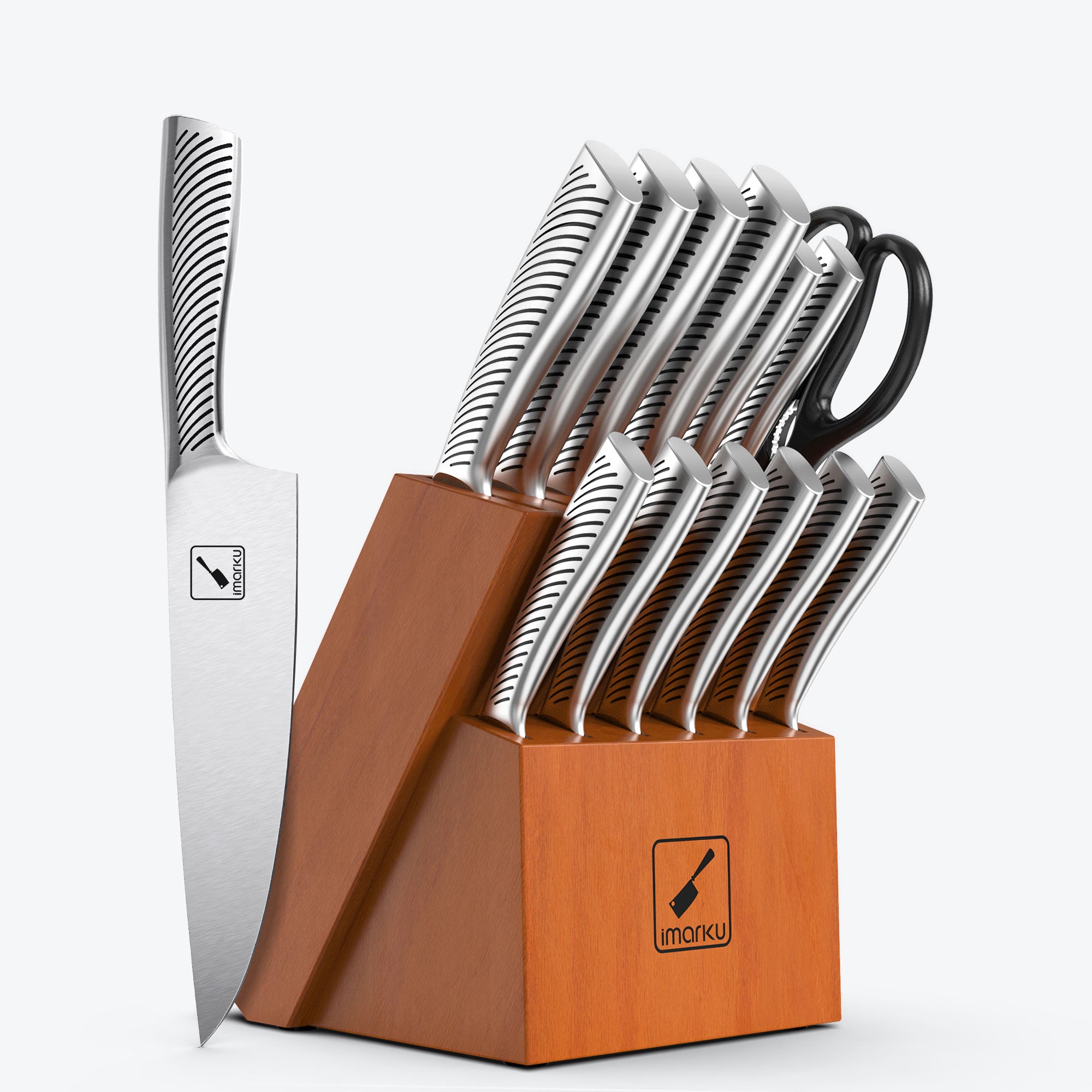
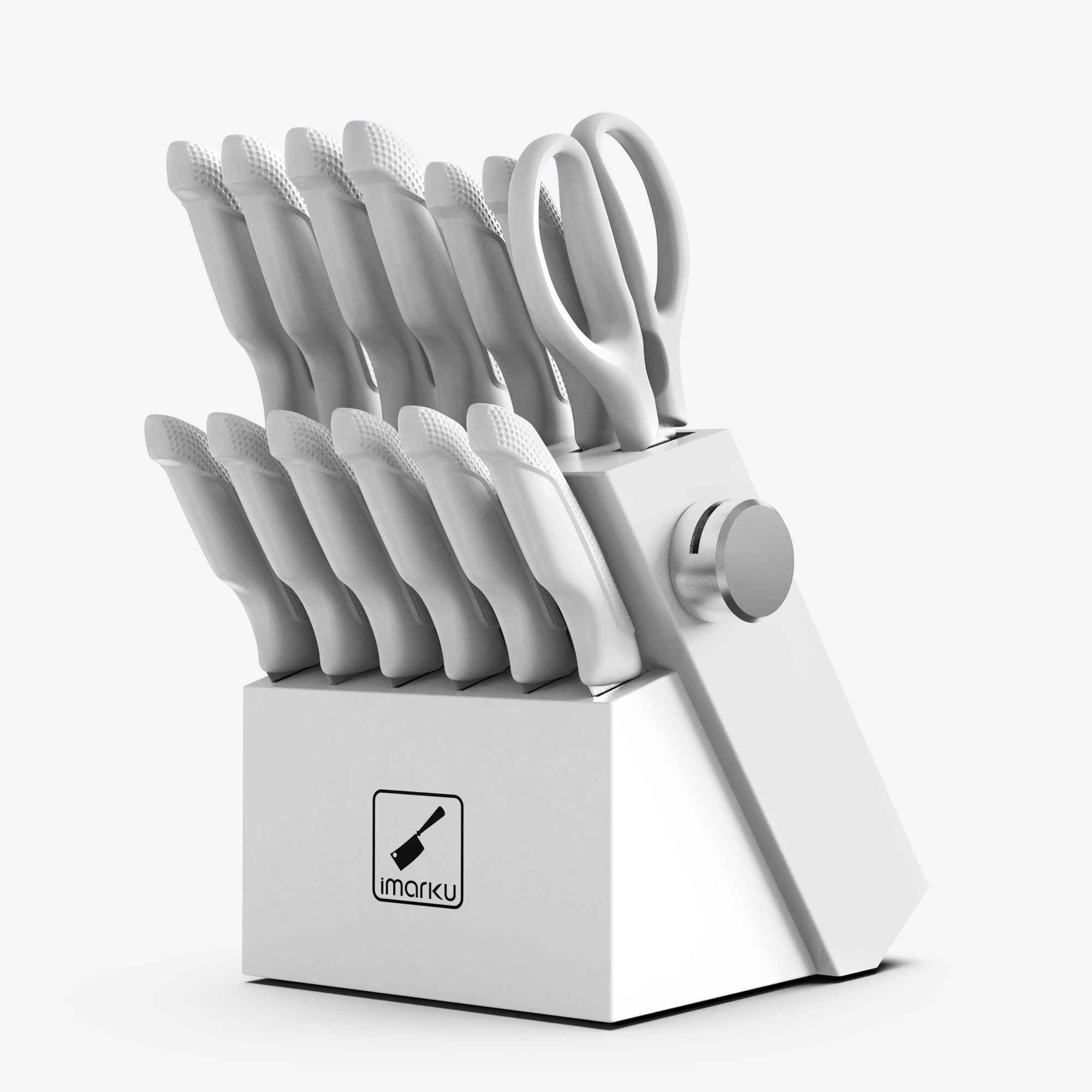
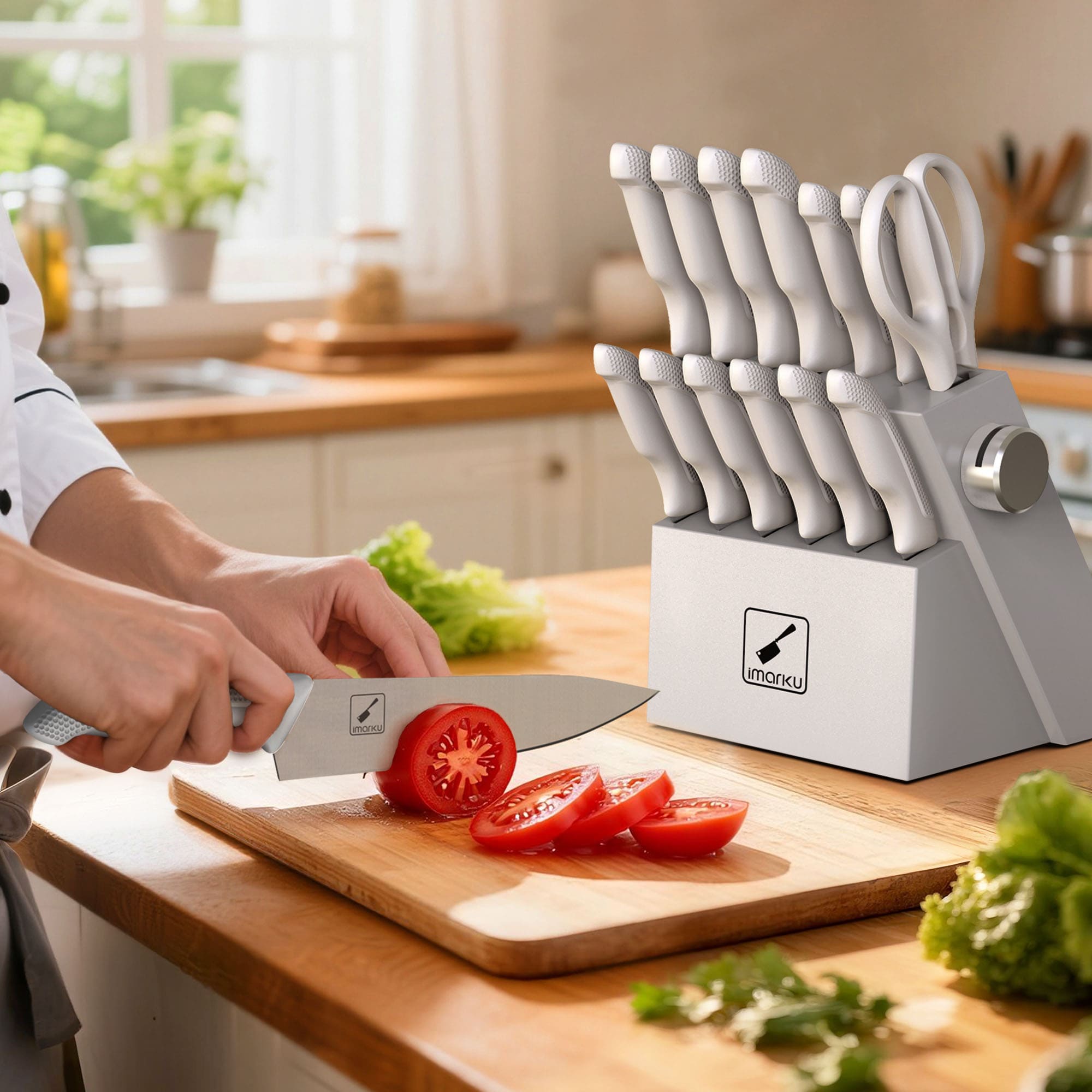
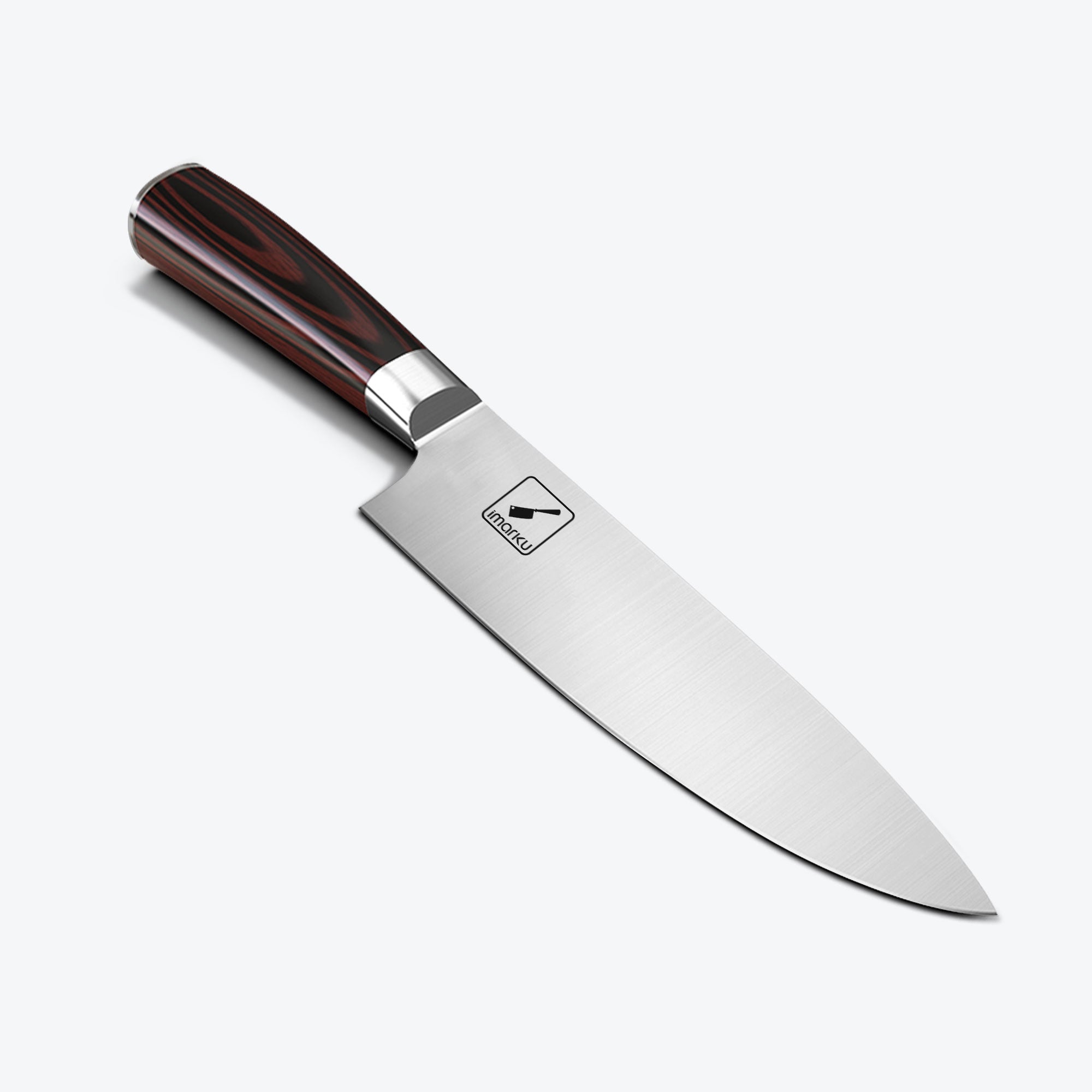
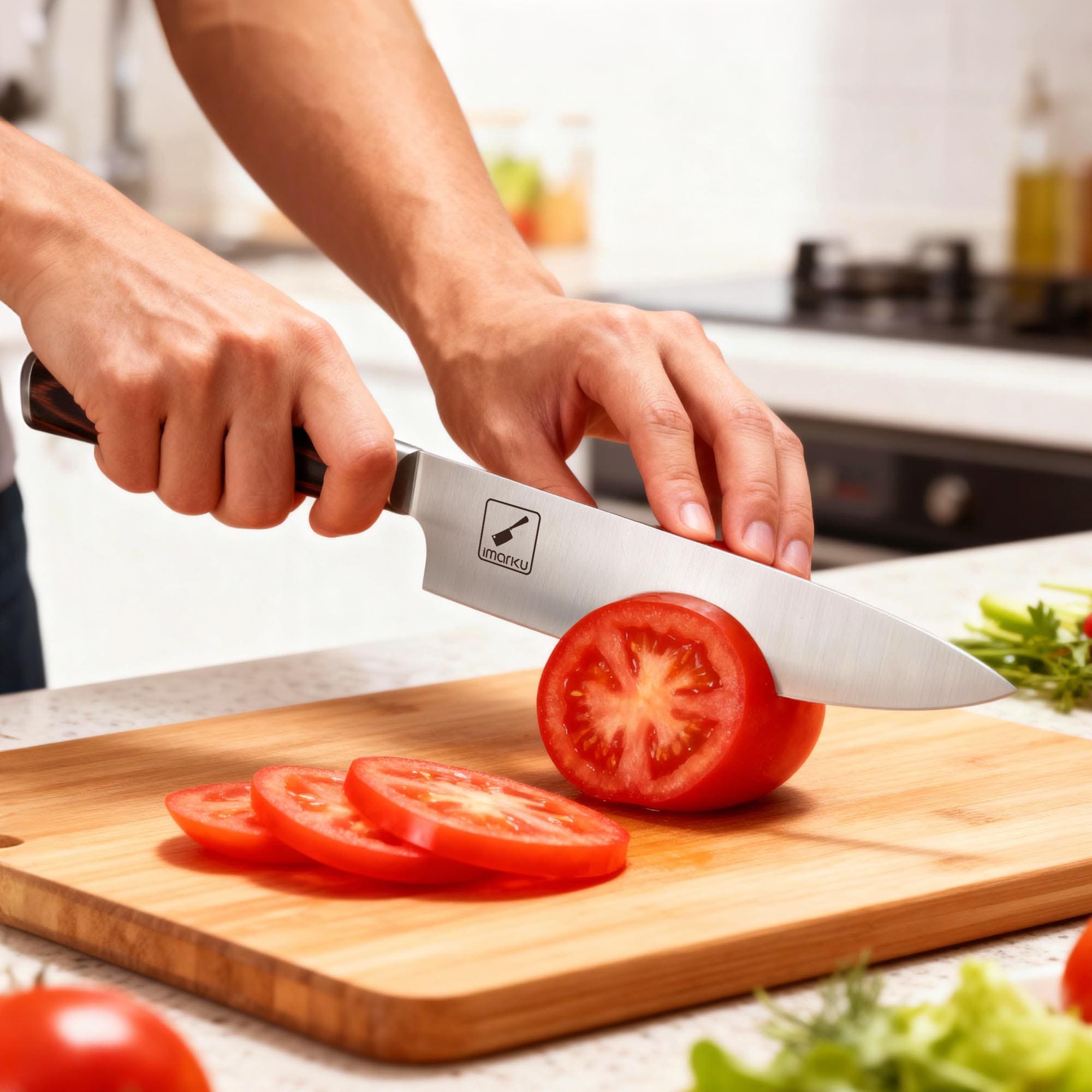
Leave a comment
All comments are moderated before being published.
This site is protected by hCaptcha and the hCaptcha Privacy Policy and Terms of Service apply.